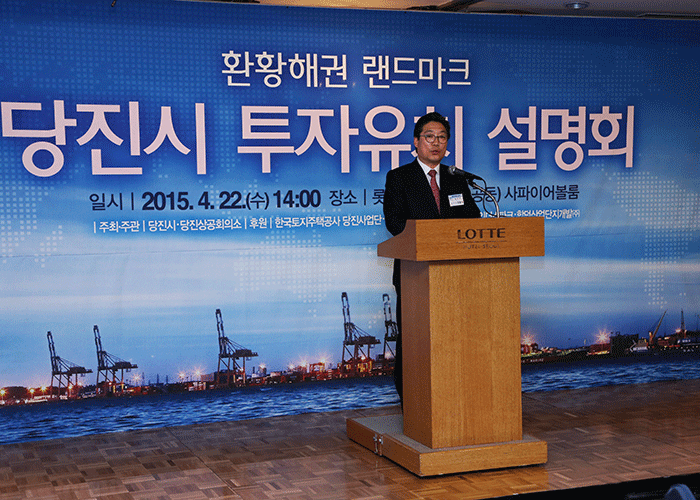After 24 years of launching
After 24 years of its launch, the project of constructing the Seongmun National Industrial Complex in Dangjin City will be completed by the end of this year, finishing its construction processes by 99% now. The large scale industrial complex in the area of over 12 million square meters has been constructed since 1991 by reclaiming public waters on a coast of the City, investing a total of 1.5 trillion won (approx. US$1.39 billion). Coupled with elevation of its status to a city in January 2012, Dangjin City is emerging as a new economic hub in the west coast region of the country.
In addition, the project of the Songsan 2 General Industrial Complex with an area of about 5.6 million square meters will also be completed by the end of this year as part of 15 industrial complexes in the City, including the Hapdeok & Sunseong Technopolis, Asan National Industrial Complexes, Hapdeok Industrial Complex and Hapdeok Industrial Park: General Industrial Complex. Construction projects of a part of these industrial complexes were already completed and others are in process. Thus the City is transforming itself from a traditional agricultural region that produced the largest quantity of rice and other agricultural products in the country to a central industrial city in the west coast region.

Accordingly, population of the City is expected to sharply increase. To accommodate increasing population, the City is also building housing complexes in or around these industrial complexes in total area of over 2.26 million square meters. In the Seongmun Industrial Complex and Songsan General Industrial Complex alone, the City government is constructing housing complexes to accommodate more than 80,000 citizens. As of March this year, the population of the City reached nearly 170,000.
The industrialization of the City was triggered by acquisition of Hanbo Steel Plant by Hyundai Steel in 2004, which subsequently invested a total of over 10 trillion won (approx. $9.27 billion) in the plant. As other leading steel companies, including Dongkuk Steel, Dongbu Steel and Husteel, moved into the City together with some 400 subcontract companies, Dangjin became the third largest steel city in Korea, next to Pohang and Gwangyang. The number of industrial companies in steel clusters increased from 50 in 2013 to 82 in 2014, and total number of manufacturing companies reached 822 last year, an increase of 19 from the previous year.

As for transportation, Dangjin port ranked first in increase rate in container traffic in the country for the fifth consecutive year, recording increase of over 25% annually on average. The project of constructing a double track subway that connects Hongseong, Sapgyo and Hwaseong (total length of 89.2 kilometers) will be launched in this month. And a railway that connects Cheonan, Dangjin, Seosan and Taean (total length of 65 kilometers) will also be built soon. Mayor Kim Hong-jang of Dangjin City said, “The city government plans to develop Dangjin as a large port with capacity of handling 82.25 million tons of freight (42 berths) by 2020. We will build Dangin as a port logistics foothold for expanding into China.”


